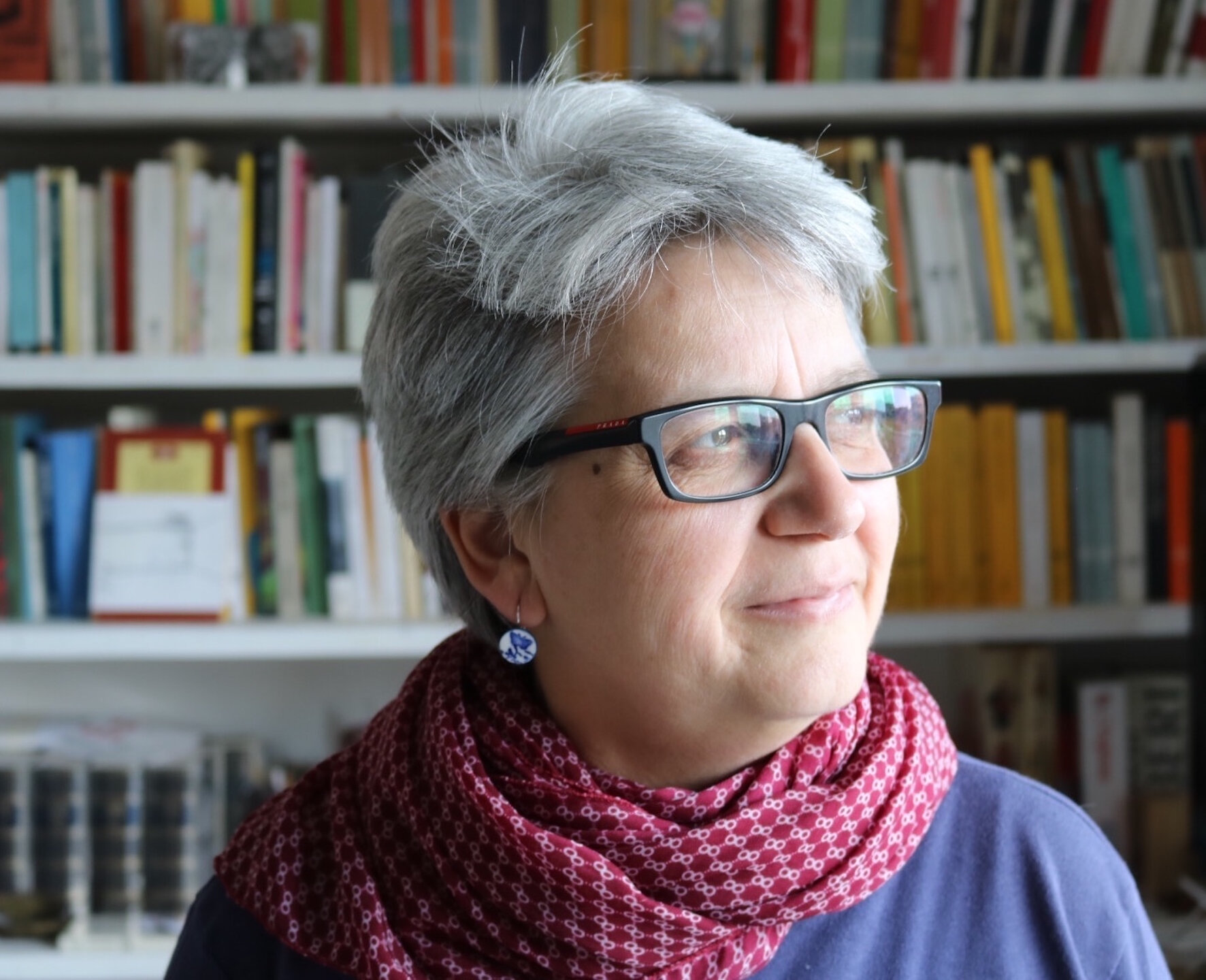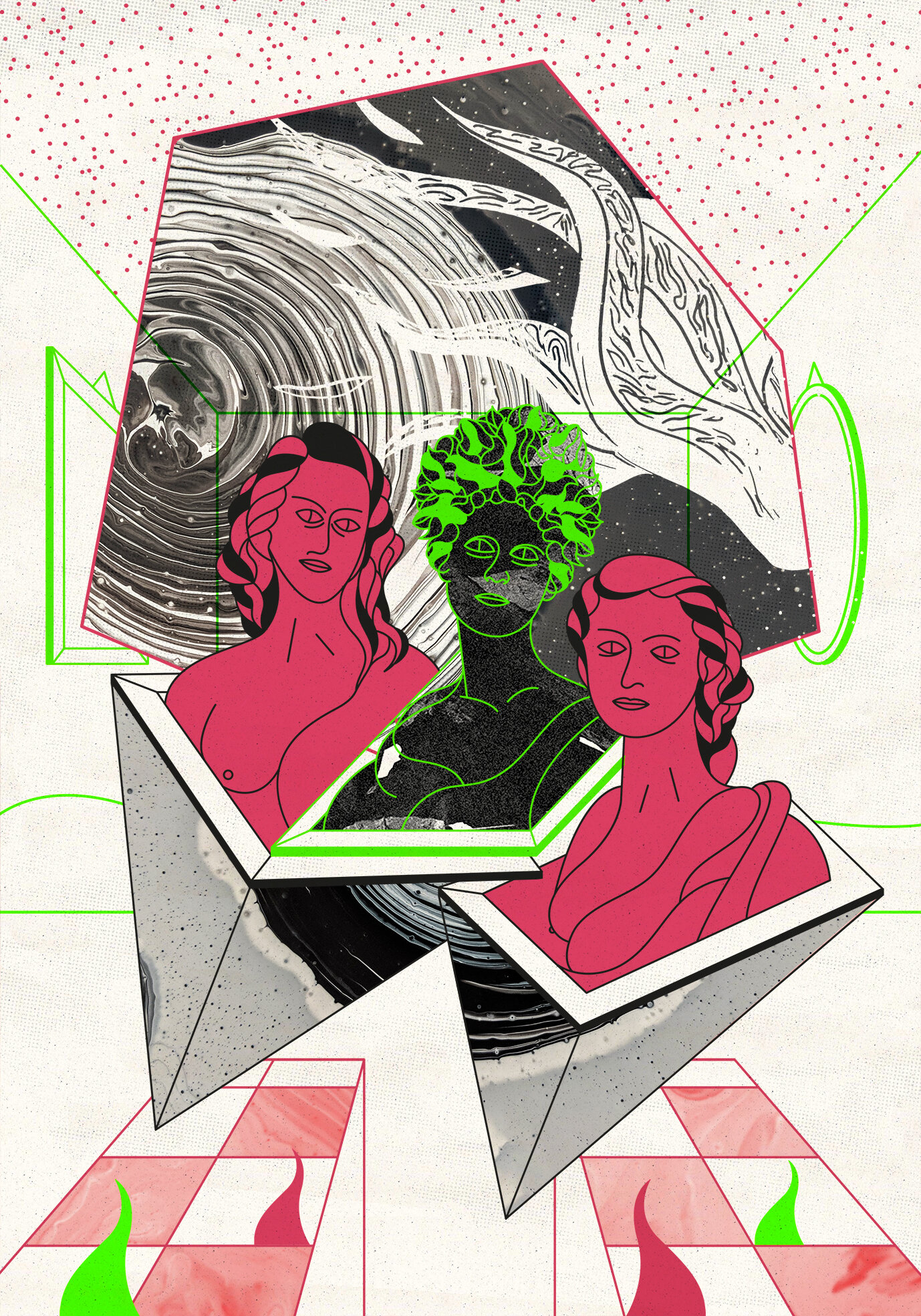Personale è il nuovo format di Talassa Magazine dedicato al mondo dei musei e delle gallerie. È una mostra intima di volti, storie e punti di vista critici degli addetti ai lavori del settore. 3 stagioni da 5 episodi ciascuna. 15 interviste brevi e 15 grafiche inedite d’autore, ispirate alle risposte degli intervistati. Per ogni stagione una domanda è sempre legata a un tema preciso. Il tema della stagione 1 è il femminismo.
Personale is the new format by Talassa Magazine focusing on the world of museums and galleries. It is an intimate exhibition of faces, stories and critical points of view of the sector. It is 3 thematical seasons of 5 episode each; 15 short interviews and 15 original graphics inspired by the interviewees’ answers. For each season, one interview question will be based on a specific topic. The theme of the first season is feminism.
di Clio Biasco, Gabriele Naddeo e Benedetto Puccia
Season 1: Femminismo – Episode 2: Viviana Gravano (Attitudes_spazio alle arti) / poster: Roberto Gentili
1. Chi sei e in cosa consiste il tuo ruolo?
Mi chiamo VIviana Gravano, sono una storica dell’arte contemporanea, docente di storia dell’arte all’Accademia di Belle Arti di Bologna, curatrice e direttrice della Galleria Attitudes_spazio alle arti a Bologna.
Who are you and what is your role?
I am Viviana Gravano, an art historian, professor at the Academy of Fine Arts of Bologna, curator and director of the gallery Attitudes_spazio alle arti in Bologna.
2. Come racconteresti il luogo in cui lavori?
Forse il luogo che mi rappresenta di più ora è la galleria d’arte. È uno spazio che ospita esposizione di artisti più noti e di giovani. Oltre alle mostre vuole essere uno spazio di incontro e dibattito, dove ospitare tutte le forme d’arte, compresa la performance e l’arte relazionale, vuole anche essere un punto di riferimento per la produzione di opere di arte pubblica nella città di Bologna.
How would you describe your object or place of work?
Perhaps the place that best represents me now is the art gallery. It’s a space that hosts exhibitions of famous artists and young artists too. Apart from being an exhibition venue, the gallery wants to be a meeting and debate space hosting all forms of art, including performance and relational art. It also wants to be a reference point for the production of public artworks in the city of Bologna.
3. Una mostra o un progetto che ti ha cambiato la vita?
Live in Your Head. When Attitudes Become Form, curata da Harald Szeemann alla Kunsthalle di Berna nel 1969. Quella mostra a mio modo di vedere ha cambiato per sempre tutti i tipi di relazioni sottese a una mostra: la relazione con lo spazio, la relazione curatore/artista, la relazione artista/opera e la relazione di tutti questi fattori con il pubblico. Una mostra che ha insegnato cosa vuol dire intendere uno spazio espositivo come un luogo di libertà e di relazioni e non solo un contenitore.
What is an exhibition or museum project that changed your life?
Live in Your Head. When Attitudes Become Form, curated by Harald Szeemann at the Kunsthalle of Bern in 1969. In my view, that exhibition has changed forever all sorts of relationships underlying an exhibition: the relationship with space, the curator / artist relationship, the artist / work relationship and the relationship of all these factors with the public. I believe that it was an exhibition that showed everyone what it really means to understand an exhibition space as a place of freedom and relationships, and not just a container.
Poster by Roberto Gentili
4. Una problematica attuale legata al tuo settore?
Una scarsa attenzione alla produzione delle opere degli artisti, specie se giovani, e un disinteresse nel pensare l’arte come un settore da promuovere come si fa per la moda o il design.
Can you tell us about a current issue related to your sector?
A lack of attention to the production of the artists’ works – especially if the artists are young – and a lack of interest in promoting art as a sector, as for instance it is normally done for fashion or design.
5. Cosa pensi si possa fare nel concreto per migliorare la situazione al riguardo?
Coinvolgere le forze produttive private, dare maggiore attenzione in ambito statale, e più che altro educare al cambiamento, favorire la conoscenza dell’arte contemporanea.
What do you think the sector could do to address this issue?
Involving more the private sector as well as making sure that the public sector is giving greater attention to art. Above all, educating for a change, promoting the knowledge of contemporary art.
6. Cosa significa per te femminismo?
Per me femminismo significa prima di tutto una battaglia che riguarda i diritti di tutt*: uomini e donne. Non perché non creda nell’importanza delle battaglie delle donne contro i poteri patriarcali, ma perchè penso che i mutamenti che ha portato il femminismo storico degli anni settanta, e quelli che stanno portando oggi le nuove femministe, come ad esempio Non una di meno, siano fondamentali non solo per liberare le donna, ma anche per aiutare gli uomini a rifiutare i ruoli imposti a loro, spesso scomodi e dolorosi anche per loro.
What does feminism mean to you?
In my opinion, feminism first of all is a battle that equally concerns the rights of all men and women. I don’t say this because I don’t believe in the importance of women’s battles against patriarchal powers. I say this because I think that the changes brought by the historical feminism during the 70s and those changes that new feminists, such as Non una di meno, are bringing today, are fundamental not only to free women, but also to help men reject the roles imposed on them, which are often uncomfortable and painful for them too.
7. Ti va di consigliarci 1 addetto ai lavori, 1 mostra/progetto e 1 libro o catalogo?
Roberto Pinto credo che sia la persona più vicina al mio modo di intendere un curatore. La mostra Documenta 13 a Kassel curata da Carolyn Christov Bakargiev. Il libro “I passages” di Walter Benjamin.
Would you like to suggest us 1 person from the sector that inspires you, then 1 exhibition or museum project and 1 book or catalogue that we should not miss?
Roberto Pinto is the person who is the closest to my way of understanding a curator. 1 exhibition: the Documenta 13 exhibition in Kassel curated by Carolyn Christov Bakargiev. The book: “I passages” by Walter Benjamin.



